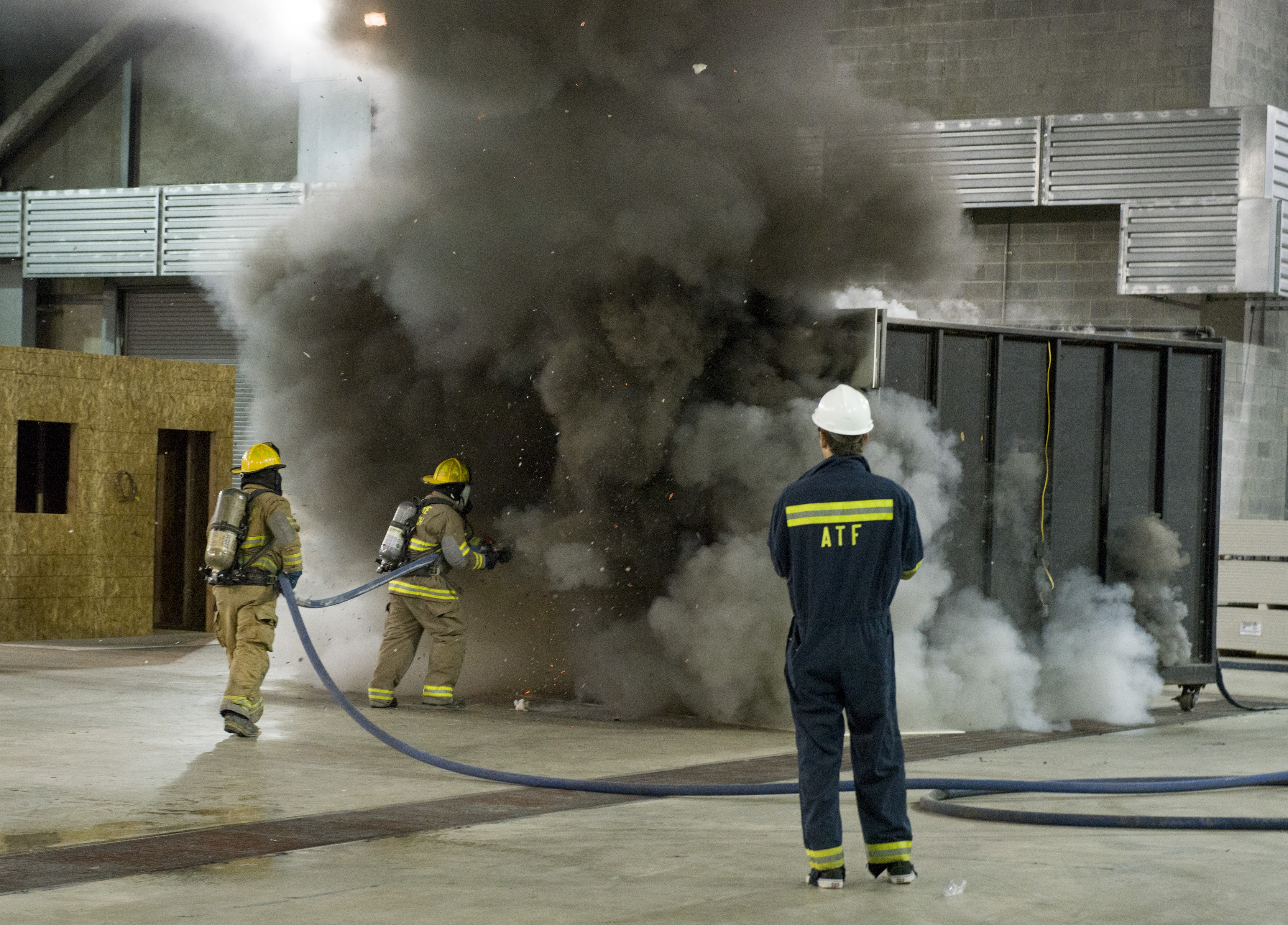The Fire Research Laboratory (FRL) is the nation’s only large-scale fire science research laboratory dedicated to fire and arson criminal investigations. The FRL is located within the National Laboratory Center (NLC) in Ammendale, Maryland. It is accredited by the ANSI National Accreditation Board to the ISO/IEC 17025:2017 and AR 3125 (2023) standards to conduct analysis and testing related to fire scene reconstructions as well as electro-mechanical evidence examinations.
FRL is the first laboratory in the United States to provide services such as on-scene support and remote technical assistance for fire investigations. Prior to FRL’s opening in 2003, large-scale fire research testing had to be done outdoors, which introduced problems such as weather and contamination.
The highly trained staff at FRL conduct flashover studies to show how fast fires can spread under different conditions. They also validate fire pattern analysis indicators, research the impact of accelerants on fire growth and spread, and analyze causes of electrical fires. They work closely with ATF’s certified fire investigators (CFIs) to help them identify a fire’s origin and determine its cause based on the collected evidence.
Research and Testing Facilities
ATF’s FRL is a one-of-a-kind facility featuring cutting-edge scientific methods used to measure data specific to fire behavior, including heat release rate, burning rate and smoke production. The 16,900-square-foot burn room can accommodate a three-story structure created to help investigators safely study large-scale fire behavior, perform engineering analyses, and improve computer models. This research space also allows ATF’s criminal investigators to conduct real-time fire scene analysis and test validation.
FRL also houses an electrical testing laboratory where staff perform forensic examinations for cases. They also conduct tests and failure analyses of residential and commercial electrical products including components, equipment and wiring.
 To keep track of all the data from their tests and analyses, staff members use a proprietary Data Acquisition System (DAS) that allows them to collect more than 2,300 channels of data per second. In addition, the DAS has the ability to capture video in both standard and high definition. FRL uses high speed and forward-looking infrared (FLIR) thermal imaging cameras to capture burn test data. This allows experts to clearly review evidence and make sound conclusions.
To keep track of all the data from their tests and analyses, staff members use a proprietary Data Acquisition System (DAS) that allows them to collect more than 2,300 channels of data per second. In addition, the DAS has the ability to capture video in both standard and high definition. FRL uses high speed and forward-looking infrared (FLIR) thermal imaging cameras to capture burn test data. This allows experts to clearly review evidence and make sound conclusions.
FRL was designed around physical and environmental safety, featuring an extensive fire safety suppression system as well as on-site air and water pollution treatment facilities. These systems process and cleanse the building’s exhaust air before releasing it into the atmosphere, and eliminate the impact of pollution runoff into the community by collecting and recycling the water used to suppress test fires.
View all fire research publications
Training
FRL is staffed by certified fire protection, electrical and mechanical engineers who teach fire science courses as part of ATF’s CFI training. They also conduct training at the Advanced Fire and Arson Training Complex located at the National Center for Explosives Training and Research. They leverage their expertise to support nationally significant arson investigations by deploying as members of the ATF National Response Teams and International Response Teams. They maintain their scientific credentials by also working on local and state chapters of the International Association of Arson Investigators.
Collaboration
FRL staff collaborate with research institutions all over the world to joint research initiatives to improve fire investigation. FRL is a joint effort between law enforcement, fire services, and the private sector, positioning FRL as leaders in fire investigation science.
FRL staff use cutting edge scientific, technical, educational and training methods to prepare CFI candidates for real world scenarios. In addition, FRL engineers conduct scientific research in fire and forensic science. This information is used to develop improved investigative techniques and collected in a central repository for fire research data.
These highly trained professionals have also worked on some notable cases, including the USS Miami submarine fire, the Alabama church fires, and the DC serial arsonist.

